Golfer's elbow (Epicondylitis radialis humeri)
Golfer's elbow (tennis elbow): Symptoms, causes and treatment from Vienna
For many, golf is both a fascinating pastime and a serious sporting challenge. But for all its appeal, the game of golf also carries an undesirable side effect – golfer’s elbow, also known as golfer’s elbow. This painful injury does not only affect golfers, as the name suggests, but can also affect other athletes and people who perform repetitive hand and arm movements.
Golfer’s arm is one of the most common overuse complaints and can have a significant impact on quality of life and athletic performance. This article is devoted in detail to golfer’s elbow, its development and its many effects. This article will not only shed light on the causes and risk factors, but also highlight the various treatment options.
What is a golfer's elbow?
Golfer’s elbow, also known as golfer’s elbow or medically as epicondylitis humeri ulnaris, is a painful strain that affects the inside of the elbow. This is in contrast to tennis elbow or tennis elbow, which affects the outside of the elbow. Both clinical pictures have in common that the trigger is an overload of the muscle attachments.
Despite its name, this overload is by no means limited to golfers. In fact, it can affect any athlete or person who performs repetitive hand and arm movements, whether it’s tennis, baseball, weightlifting, rock climbing , or even occupational activities that require repetitive wrist and hand movements.
Golfer's elbow belongs to the enthesopathies
Enthesopathies are diseases of the tendon insertions or the origins of certain muscles, which are manifested by typical pain caused by chronic overuse.
The main cause of golfer’s elbow is overuse of the tendons and muscles that attach to the medial epicondyle of the humerus. This overload leads to micro-injuries in the affected tissues and eventually to inflammatory irritations. Symptoms often take the form of pain, weakness or limited mobility.
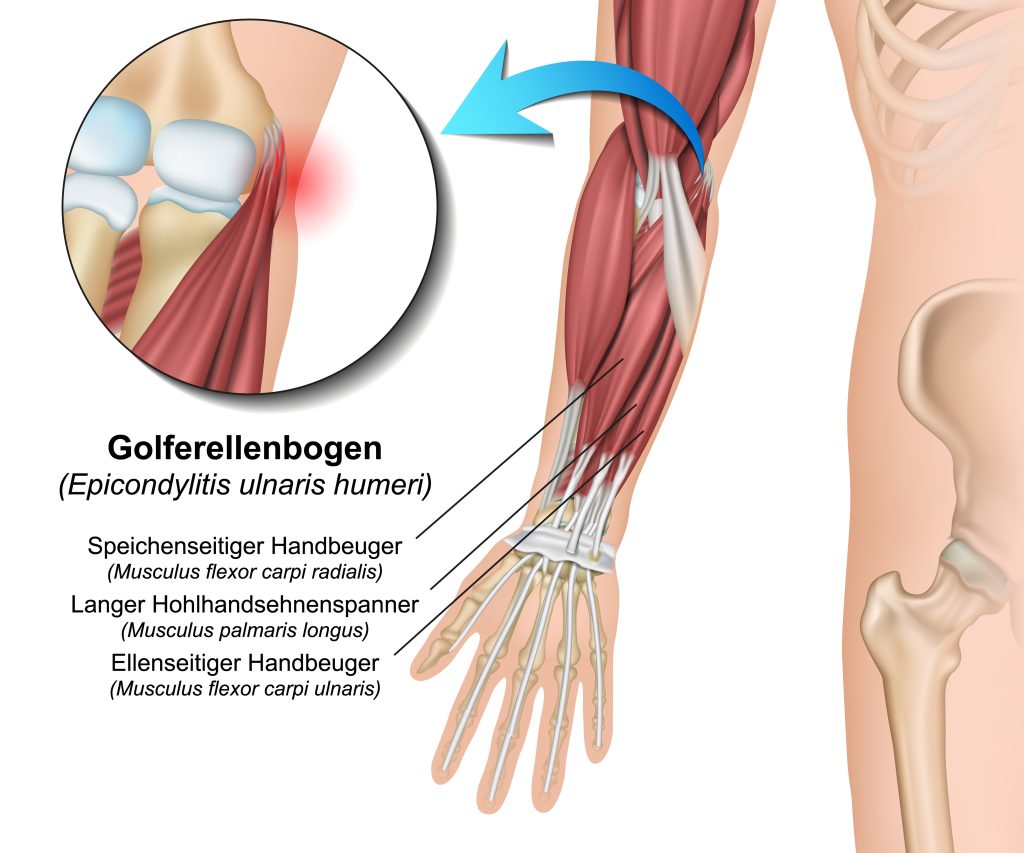
There are different types of golfer's elbow
It is important to note that golfer’s elbow can be divided into two main types: acute and chronic golfer’s elbow. Acute golfer’s elbow occurs suddenly due to a specific injury or excessive stress, while chronic golfer’s elbow develops slowly over a long period of time, often due to repetitive minor injury-overuse. Timely recognition and differentiation between these two forms is critical to choose the best treatment options.
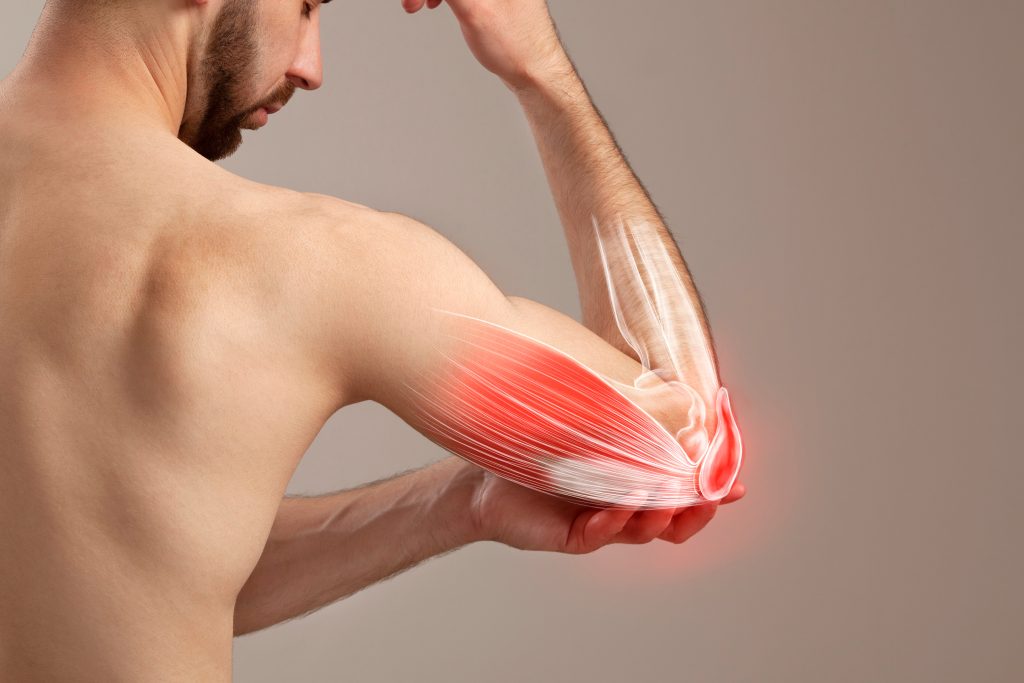
What are the causes of golfer's elbow?
Golfer’s elbow can be triggered by a variety of causes. To prevent and treat effectively, it is important to understand the causes in more detail. Here are some of the main factors that can lead to golfer’s elbow:
Repeated load
One of the most common causes of golfer’s elbow is repetitive strain on the forearm muscles and tendons. This overuse occurs when you continuously perform hand and arm movements such as those found in golf, tennis, or other athletic activities. But repetitive movements can also increase the risk at work, especially in manual occupations.
Muscle weakness
Insufficient strength in the muscles that stabilize the elbow and control hand and finger movements can promote golfer’s elbow. When muscles are not strong enough to handle the load, they are more susceptible to micro-injuries and inflammation.
Poor technology
In the game of golf, proper technique is crucial. Incorrect swing technique, especially in beginners or inexperienced golfers, can increase pressure on tendons and muscles, increasing the risk of golfer’s elbow.
Age and gender
The risk of golfer’s elbow tends to increase with age. Men are more likely to be affected than women, although women may also be at risk, especially if they are involved in activities that require repetitive motion.
Previous injuries
Individuals who have already suffered elbow or forearm injuries are at increased risk for golfer’s elbow. Prior injury may compromise the structural integrity of the muscles and tendons.
Work-related factors
Certain occupations that require repetitive hand and arm movements, such as handymen, painters, or office workers who do a lot of computer work, are at higher risk for golfer’s elbow.
Identifying the underlying causes is critical to developing effective prevention strategies and selecting the right treatment.
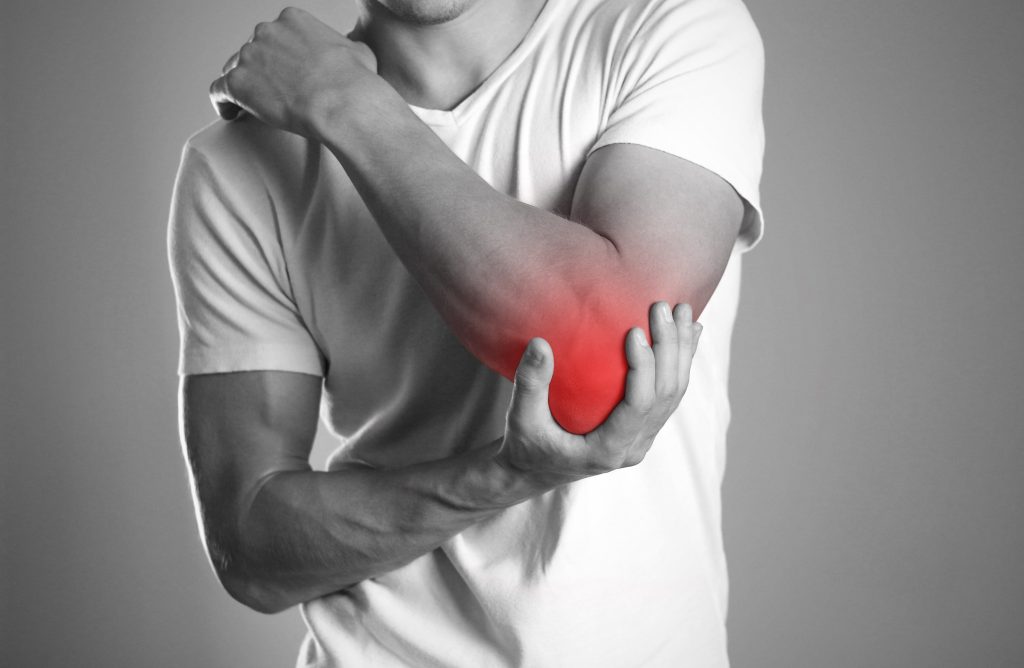
What are the symptoms of golfer's elbow?
The symptoms of golfer’s elbow are usually uncomfortable and can significantly affect the ability to perform everyday tasks and sports activities. It is important to recognize the signs and symptoms early in order to initiate appropriate treatment and avoid subsequent damage. Here are the typical symptoms of golfer’s elbow:
Pain
Pain is the most prominent symptom of golfer’s arm. It usually occurs on the inside of the elbow and may spread toward the wrist. Pain can vary from mild to severe and often occurs with reaching or lifting movements.
Weakness
Affected individuals often experience a noticeable weakness in their grip. Holding onto objects, rotating the wrist, or holding a bat or racket can become difficult.
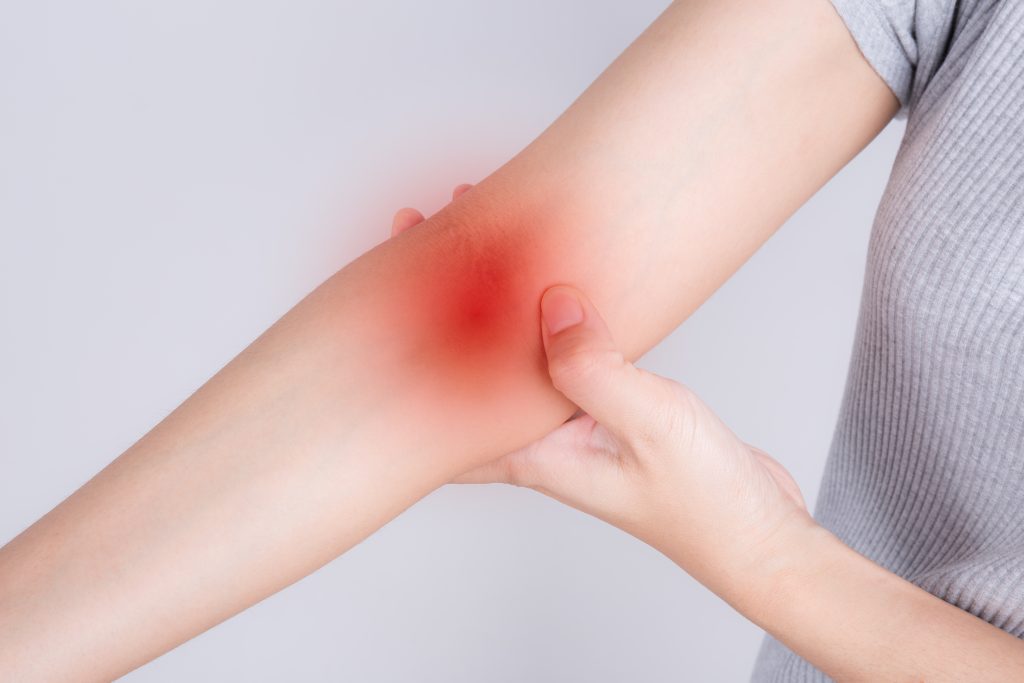
Stiffness
A feeling of stiffness in the elbow and wrist is also common. This can be particularly pronounced in the morning after waking up.
Numbness and tingling
In some cases, numbness or tingling may occur in the fingers, caused by nerve irritation.
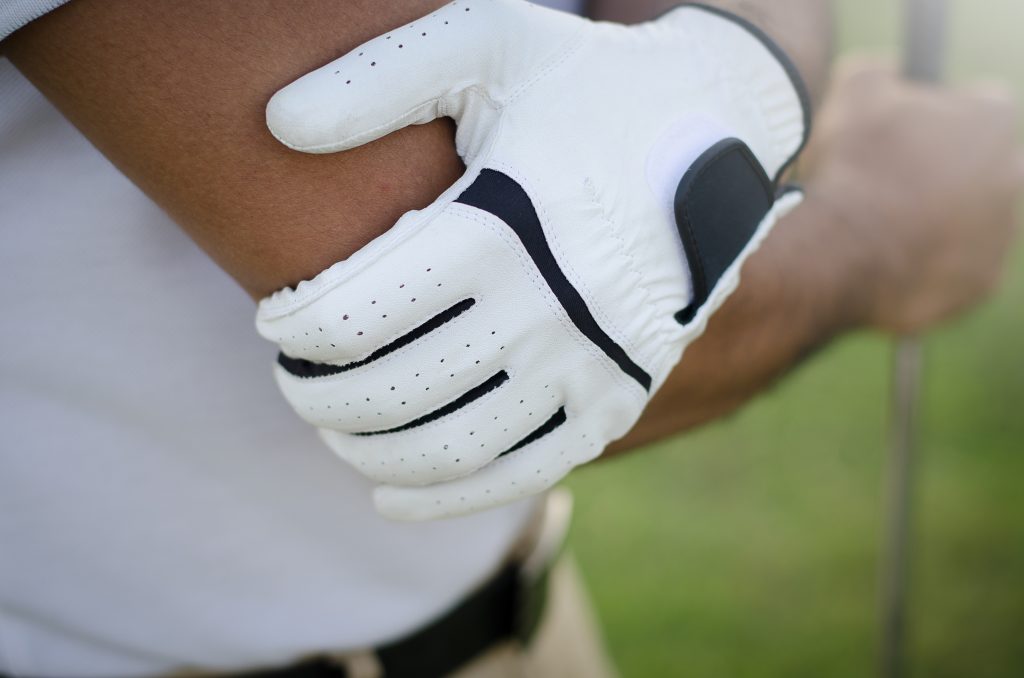
Diagnosis of golfer's elbow
Diagnosis of golfer’s elbow is usually made by a physician or sports medicine specialist. As an elbow specialist, I am also the right person to contact for your complaints.
The anamnesis & diagnosis
The physician will take a thorough history and perform physical exams to evaluate the affected area. The clinical picture can be well diagnosed by certain bending and stretching exercises.
Additionally, imaging such as X-rays or MRI scans may be performed to rule out other possible causes of the pain and more accurately determine the degree of injury.
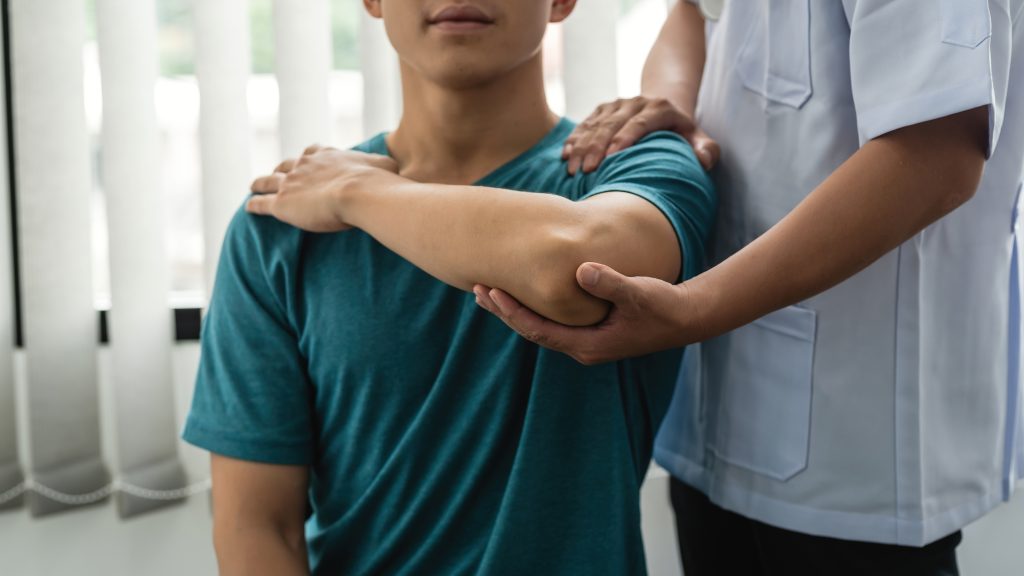
Differentiation between acute and chronic complaints
The distinction between acute and chronic golfer’s elbow is also critical, as treatment approaches may differ. For acute pain, wearing an elbow brace can provide temporary relief. In more severe cases, the doctor may prescribe anti-inflammatory medications or recommend physical therapy.
Accurate diagnosis and early treatment are critical to speed recovery and prevent chronicity of symptoms.
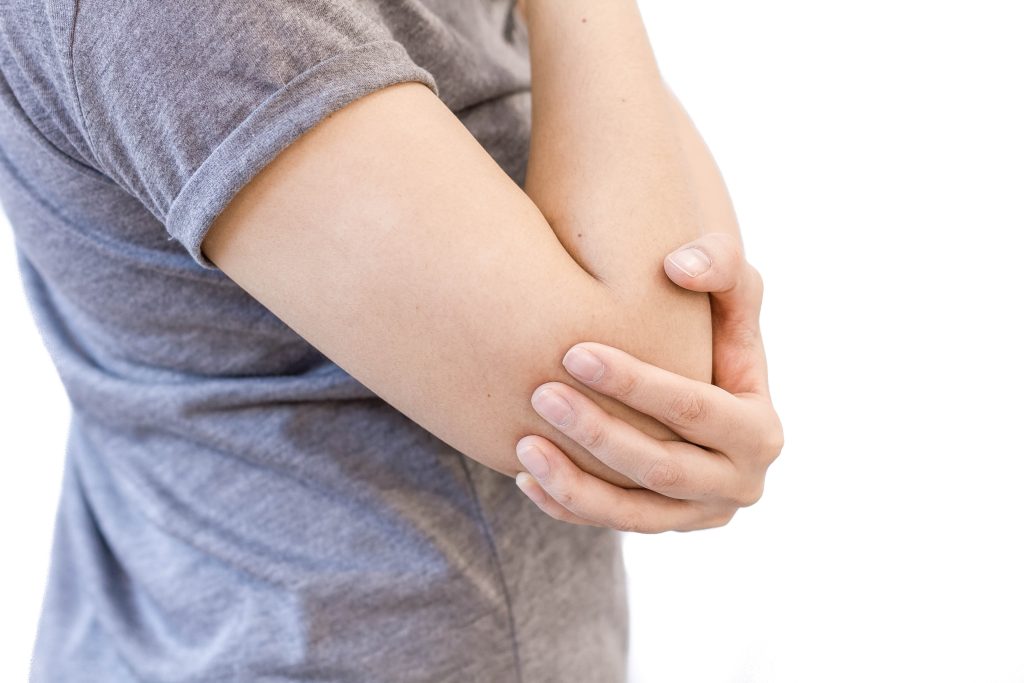
Prevention of golfer's elbow golfer's elbow
Prevention of golfer’s elbow is critical, as it helps prevent this painful injury and maintain long-term elbow and forearm muscle health. Here are some measures to prevent golfer’s elbow:
Warm up
Before starting any sporting activity, a thorough warm-up is essential. Through targeted stretching exercises and light warming up of the muscles, you can increase blood circulation and prepare the muscles for the upcoming load.
Technique and training
Whether you’re a golfer, tennis player or active in any other sport, make sure you use proper technique and practice regularly. An experienced trainer or coach can help you develop proper technique that minimizes stress on your joints.
Strengthening the muscles of the forearm
Through targeted strength training of the forearm muscles, you can increase stability in the elbow area and reduce the risk of injury. Exercises like wrist curls and finger flexions can help.
Ergonomics in the workplace
If your job requires repetitive hand and arm movements, make sure your workstation is ergonomically designed. Ergonomic measures can minimize the stress on your arms and elbows.
Proper equipment
Use the right equipment and make sure it is well matched to you. This applies in particular to golf clubs, tennis rackets or other sports equipment. Improperly fitted equipment can increase the stress on your muscles.
Breaks and rest
Schedule regular breaks in your exercise activities to give your muscles time to recover. Overtraining can increase the risk of golfer’s elbow.
Proper nutrition and hydration
A balanced diet and adequate hydration play a role in injury prevention. Be sure to get enough nutrients for muscle recovery.
Early treatment of symptoms
If you notice the first signs of golfer’s elbow symptoms, you should not hesitate to seek medical advice and take appropriate action to treat the injury early.
Preventing golfer’s elbow requires attention, care and awareness of your physical condition and activities. By incorporating these prevention strategies into your lifestyle, you can significantly reduce the risk of golfer’s elbow and maintain your athletic performance and quality of life.
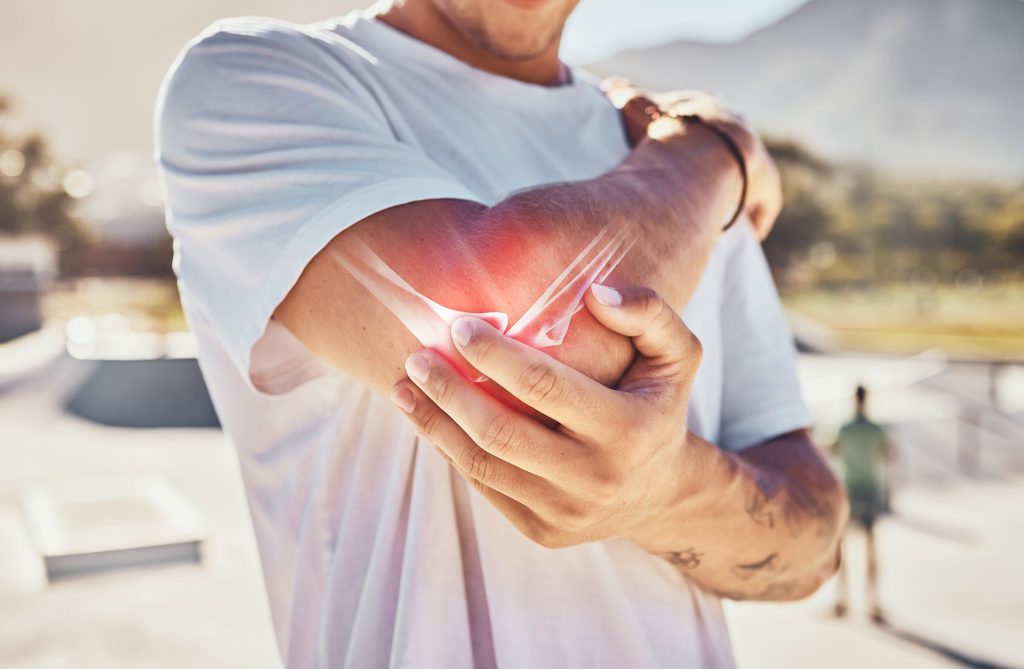
Treatment options for golfer's elbow
Treatment options for golfer's elbow
Conservative treatment
In most cases, properly administered conservative treatment is sufficient. In the acute phase, an orthosis or taping can be used to relieve the muscles. Certain exercises can help relieve pain and achieve a better quality of life.
Treatment with drugs
Among the medications, the so-called non-steroidal anti-inflammatory drugs, which soothe locally irritated tissues, dominate. They can be administered generally (tablets) or locally (in the form of a gel).
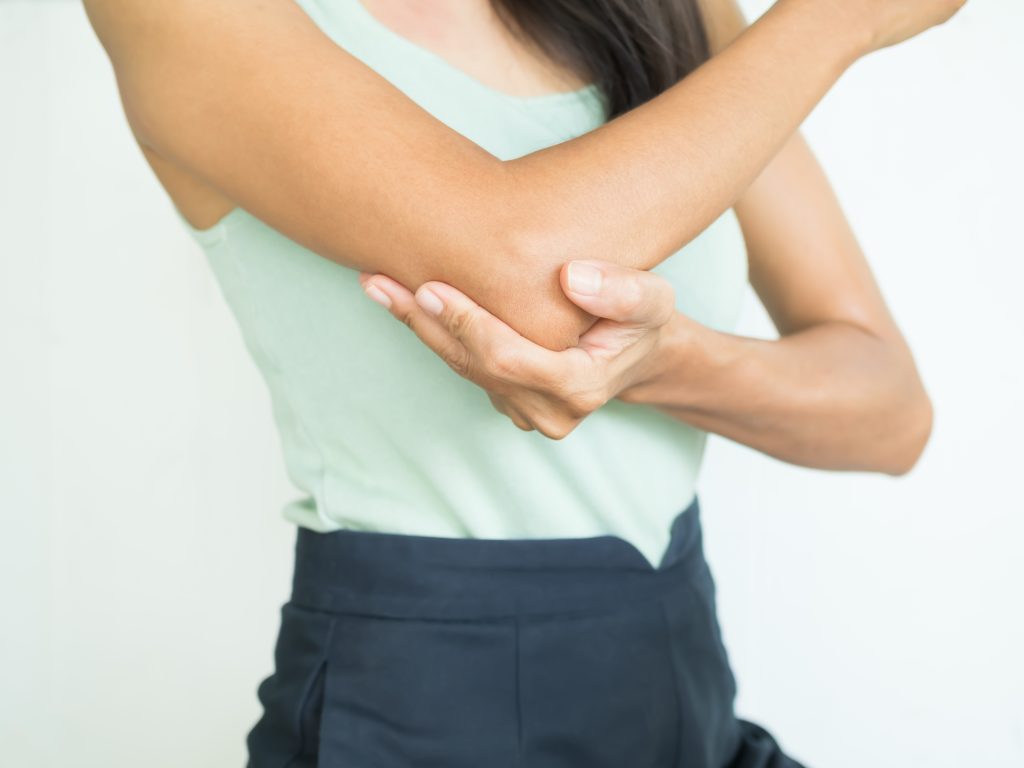
Physical therapy
The physical treatment methods can be individually chosen between shock wave, laser, ultrasound or electrotherapy. Treatment with Kinesio Tape can also act as a supportive measure.
Regime measures
Cortisone infiltration, which is very popular among physicians, is not recommended more than twice because of its negative effect on soft tissue. Most important, however, are regimen measures, which means that the patient must avoid all activities that cause pain for several weeks. If intensive conservative treatment is unsuccessful for six months, we proceed to surgical treatment.
Surgical intervention
In severe cases where conservative treatments are unsuccessful, surgery may be considered. During surgery, the doctor may remove damaged tissue or make repairs. An overview of previous operations can be found under the heading News.
The choice of appropriate treatment depends on the individual diagnosis, the severity of the injury, and other factors. It is important to work closely with your doctor to develop a customized treatment strategy.
In addition, patience and adherence to your treatment team’s recommendations is critical. Golfer’s elbow can take some time to fully heal, but with proper care and therapy, a successful recovery is usually possible.
Conclusion
In concluding this article, we would like to stress the importance of preventing and caring for your golfer’s elbow and your overall elbow health. Golfer’s elbow can be uncomfortable and interfere with athletic performance, but with proper care, precautions and appropriate treatment when necessary, successful recovery is possible.
Remember that your body is your most valuable tool in sports and everyday life. Understanding the causes, symptoms and treatment options for golfer’s elbow is key to protecting your health and getting the most out of your athletic life. If you have questions or notice symptoms, do not hesitate to seek professional medical advice. Timely treatment and prevention are the way to freedom from pain and athletic success.